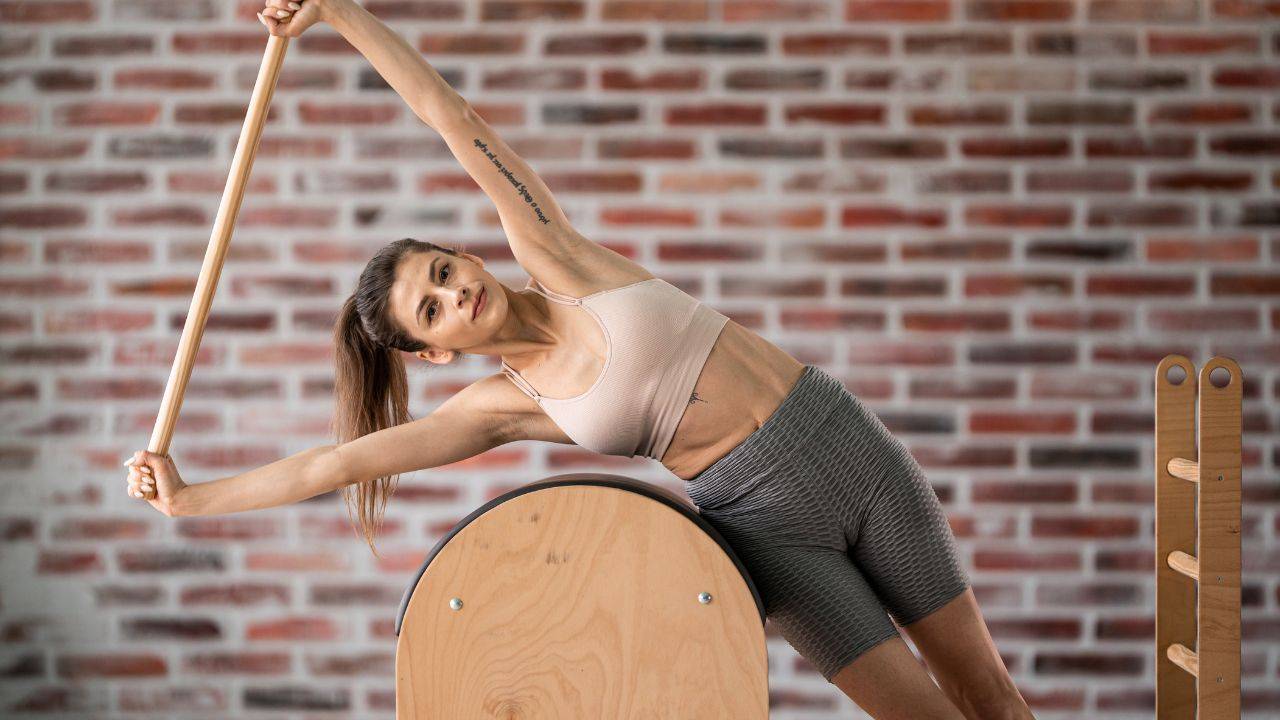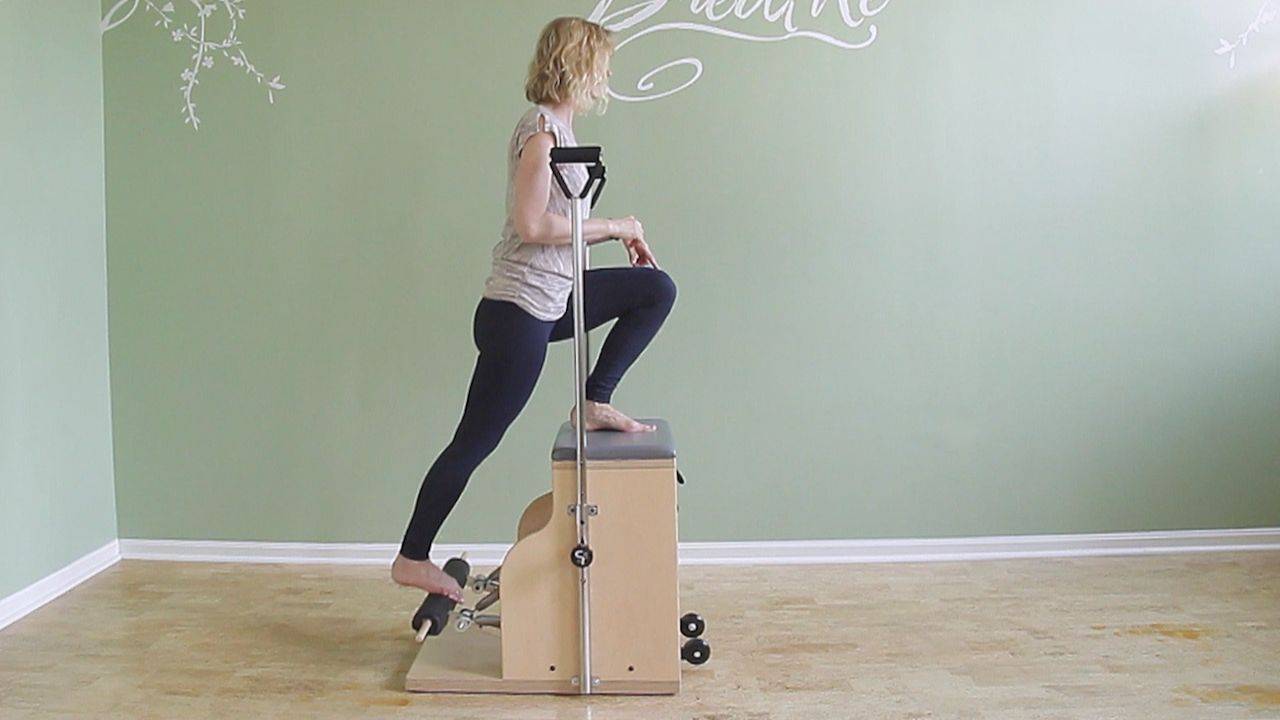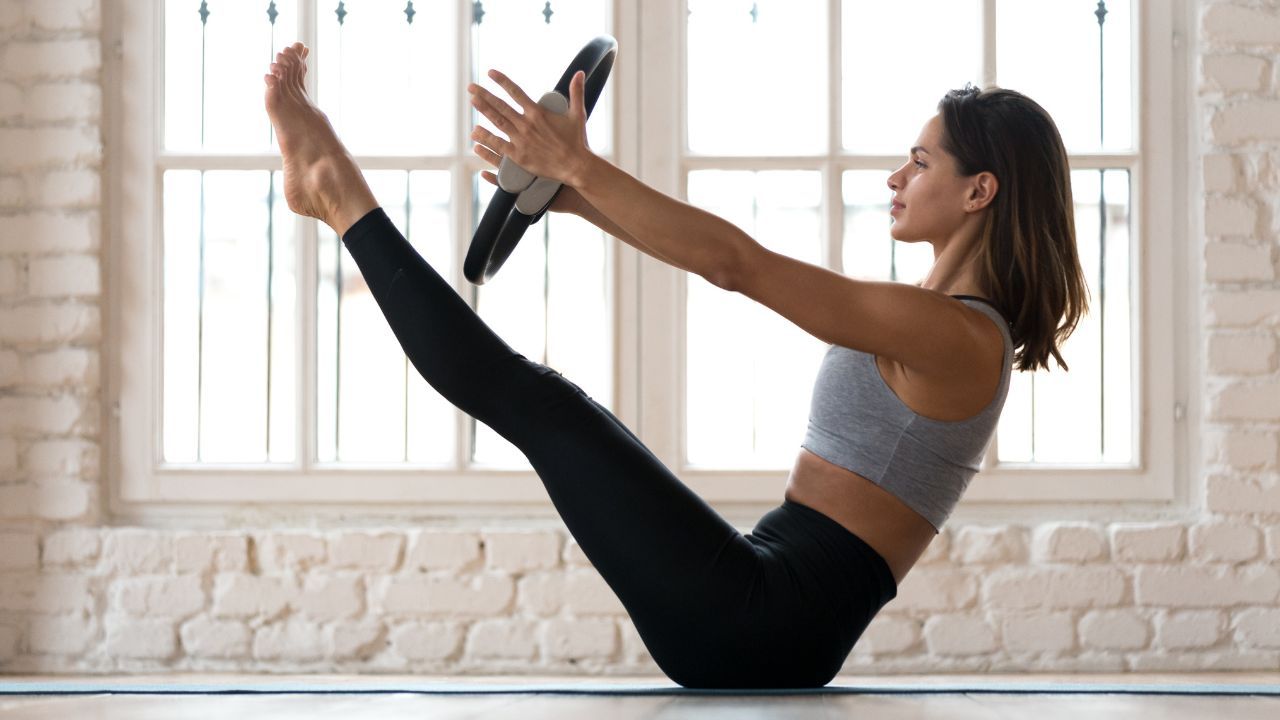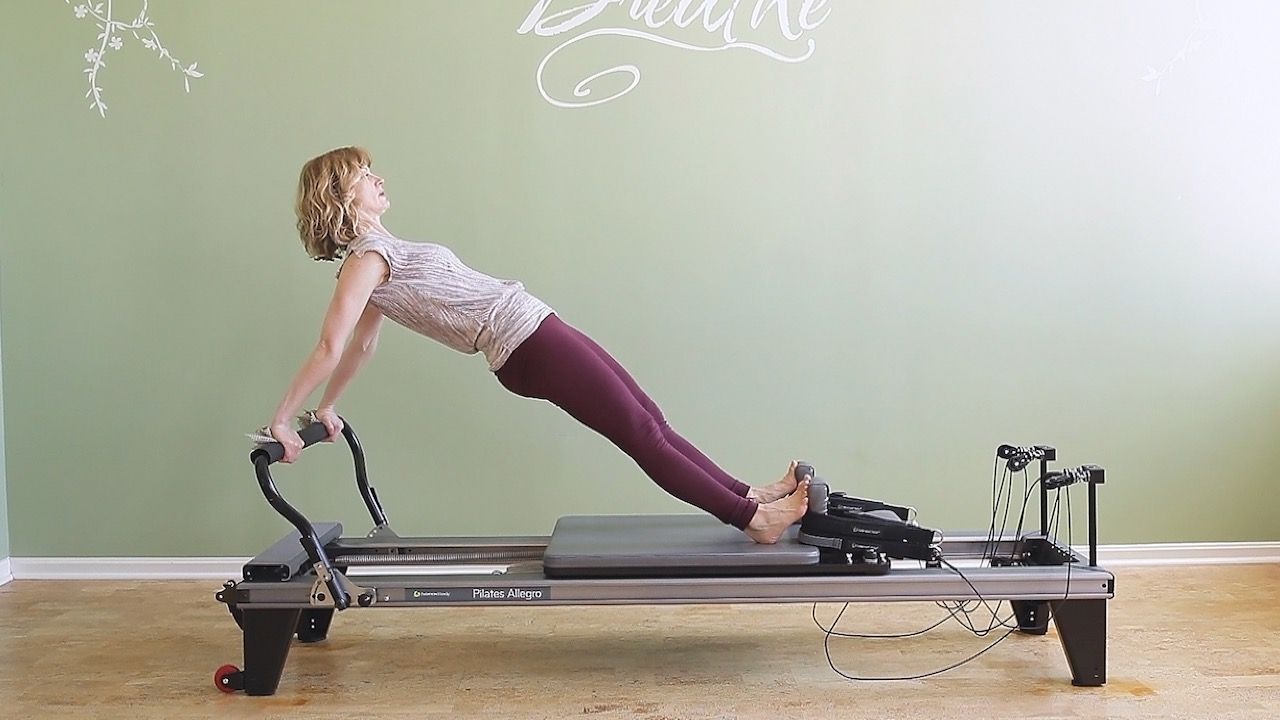Club Pilates Bedford, New Hampshire | Studio Spotlight
Apr 20, 2024
I find it very interesting to visit different studios and experience firsthand the wide variety of styles in the Pilates realm.
I recently took a CP Reformer Flow 1.5 class at Club Pilates in Bedford, New Hampshire, and here is my experience.
The Space and Vibe
This was my very first Club Pilates class so some of this may be very obvious to many of you. The room was clean and organized and had a good temperature, not too warm not too cold. There was music playing, which continued all class long. The teacher used a microphone so we could hear her better and she didn’t have to yell over the music.
I’m personally not a fan of music in Pilates, but Club Pilates classes are basically group fitness classes, just like any aerobics class. And I guess music is normal in this environment and expected by many people who are used to taking group fitness classes. Fun fact, I used to teach group fitness back in the day.
I purchased and scheduled the class online ahead of time which worked well and then had to fill out some paperwork upon my arrival at the studio, which didn’t take long at all.
I was told to put on my sticky socks and pick any Reformer.
The Style
Club Pilates teaches most definitely a contemporary style of Pilates. I had never done most of the exercises before. But they were taught safely and clearly. There were no “crazy”, unsafe, or extremely advanced exercises.
This studio - and I believe all Club Pilates studios - are equipped with Balanced Body Studio Reformers with 2 green, two red, and one blue spring. No yellow, which is the extra light spring. At first, this surprised me, but after the class, I realized that in this group environment, the yellow spring might have the potential for a dangerous environment because it is sooooo light and doesn’t give any support. For a few single-arm exercises in the Reformer repertoire, I would need a yellow spring, but I guess at Club Pilates you just skip those or find a way to do them with a smaller range of motion. I also recognize that my shoulders are very weak and hypermobile and “normal” people might be able to do them with a blue spring, at least a few repetitions.
The Teacher
Before class, the instructor asked me how tall I was and explained to me that I had chosen a Reformer that was geared out for taller people. This was not something I had paid attention to when choosing the Reformer. It was nice of her to notice. She helped me change the gear bar and quickly shortened the straps for me. But, sadly, she did this very sloppily. Fortunately, I know how to check the length of the ropes and also how to adjust them if they are uneven, which they were. So, if I hadn’t double-checked and fixed my rope length, I would have done the whole class with uneven straps. Oy!
My instructor was confident and had obviously plenty of teaching experience. She didn’t search for the right words or think of what to do next. It was a very fluid “presentation”. It bordered on sounding a bit rote and mechanical, which I recognize happens to the best of us after saying the same words a million times.
She addressed the group as a whole initially as “friends”, later on as “team”, and in the last ten minutes we were simply “Thursday”. (The class was on a Thursday.) The only explanation I have for this is that she got bored saying the same thing over and over. But Thursday? I dunno.
She walked up and down the center aisle constantly and used each client’s name at least once in class. I always recommend this for building rapport with your students. 👍
Since there was music playing, she needed to use the microphone; but she turned her mic off whenever she corrected an individual student, which I’m sure people appreciate and it’s less disruptive for the rest of the class.
My Experience
Here are a few of the exercises that stood out to me for whatever reason. This is not a complete list and I do not remember the exact order we did them in.
The jumpboard was installed on the Reformer the whole class long. We didn’t jump, though. It was just a way to try different variations. Not having to put the board on or take it off during class, of course, makes for a more fluid experience.
Partly because of that, but also general decisions the teacher made, I was not familiar with much of the class. To clarify, I recognized the movements but I hadn’t done that particular variation with that particular setup before.
For example, we placed a small ball between our feet and the board for Footwork, which gave the exercise an unstable experience and required much more lower extremity stability. And it made me more alert and excited during the predictable first exercise.
We then also did Bridging with our feet on top of the jumpboard. This lifted the hips very high and increased the level of cervical flexion.
For Feet in Straps, we placed only one foot in one strap on the same side and performed the variations Scissors, Frogs, and Lift & Lower in a V-position. Choosing only one strap added a challenge to trunk stability on the coronal plane. That’s definitely great but requires additional cueing. The potential for an issue can come from the leg that’s not supported by the strap. For someone fairly mobile like me, it is VERY hard to stabilize the lumbar spine with such uneven loading. And doing very many repetitions with the unsupported leg can be tough on the hip flexors.
Basically, the unsupported leg is doing the mat version of the exercise which is in an open chain environment and much more challenging than the pseudo-open chain environment of the supported leg. In the mat version, I would choose an imprinted position but in Feet in Straps I choose neutral. With this unevenly loaded version I would probably choose a neutral pelvis and spine, hoping that the unsupported side can “keep up”.
But the bigger problem is actually the lack of neutrality from side to side. When the leg in the strap lifts, it’s easy to hike the hip on the same side, which is lateral flexion of the spine, which is a lack of neutral on the frontal plane.
I’m not saying this is a bad exercise, just that many people in a group class might not be aware of this pitfall, and the teacher did not pull our attention to it helping us correct the mistake before it could happen. I'm not just saying this to nag but it would have helped us work harder (by making the muscles work that prevent us from hip hiking).
We did 3-Way Stretch with one foot in both straps. That was fun. It made it so we didn’t need to change straps when switching from Adductors to IT band.
For Forearm Planks, we placed the short box against the inner edge of the standing platform. We attached one blue spring and pulled the carriage back and then “locked it” against the short box. This made it so the spring was pre-stretched. Then, we placed our forearms on the box and our feet against the shoulder blocks, lifted our knees, and pushed back until the legs were straight.
The Short Box is a great prop to shorten the distance between the shoulder blocks and the footbar. On my Reformer at home with the infinity bar and New York box, I couldn't replicate the setup from the studio. Here are two alternatives:
- You could pull the infinity bar towards the shoulder rests, and then place your forearms on the Footbar. Granted, the box gives my forearms a better surface to support myself on, compared to the bar.
- Place the short box against the shoulder rests, and your feet against the footbar or standing platform and perform your plank facing the risers.
We did Scooter and Runners Lunge standing on the box which we placed next to the carriage. This brought the foot of the standing leg to the same height as the carriage. The jumpboard being higher than the footbar made it so we could fairly easily hold on for balance. This variation could be nice for someone who has a Reformer without legs, such as some models meant for the home.
What I missed in the class was spine movement. With the exception of segmental Bridging, we did not move our spine at all. Hm. I know that avoiding spine movement altogether is an easy way to teach a group class that's safe for everyone, and if it’s a one time thing I have nothing against it. My concern is only for those clients who take three or four classes each week for months or years and never move their spine. It’s just not a complete workout.
But who knows, maybe there is more spine movement in other classes. 🤞🏻
The Takeaway
My overall experience was a good one.
Here’s a question that came up for me regarding creating sequences in this environment:
I usually recommend that Pilates instructors teach the same sequence for at least a month. But, with students attending class three, four, or even five times per week, you can’t teach them the same sequence each day. My hamstrings were quite sore the next day from the Bridging variation with the jumpboard. It would not have been smart for me to challenge my hamstrings again the following day. Muscles that are sore need to rest, otherwise we overtrain, which - fun fact - actually makes us weaker. 😳
What do you do?!
Basically, you’ll need to create a sequence for every day of the week that you teach. No one will attend two classes in a day, I hope. After one week, my hamstring would have been ready for the bridging challenge again. That being said, you can’t control which exercises the teacher on Sunday includes in her class, so there might be some overlap no matter what.
This being a group environment, you can’t control all the factors and you can’t correct everyone simultaneously. It is what it is.
One more thing.
I hadn’t known that Club Pilates’ tagline is “Do Pilates. Do life.” I must say it is a great slogan. It’s short and to the point. Balanced Body’s tagline is “Move Better. Live Better.” This is also the tagline I used for my studio back in the day. In the first iteration of it, I included “Feel better.” in the middle, but got rid of it eventually for the sake of brevity. I have seen this tagline on many other studio websites too.
Both these taglines are similar and express what Pilates is all about: helping you do better (more easily, with less strain and more energy) whatever you want to do in your life (and pretty much everything requires movement of some sort).
Cheers,
~ Mara









